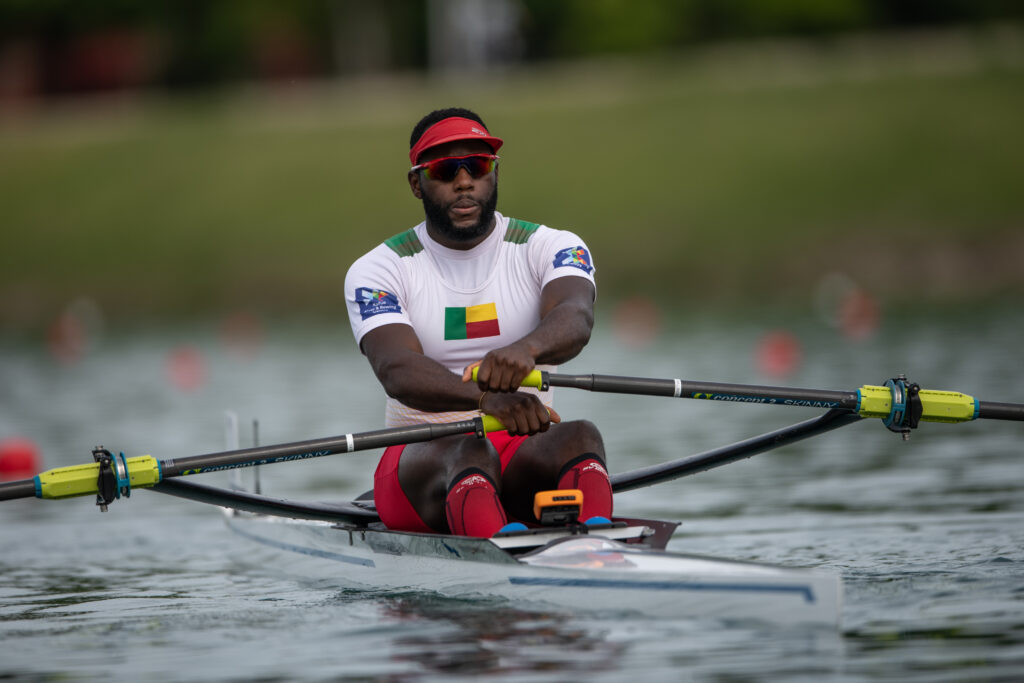
06 May 2021
Tokyo then and now – what’s changed since 1964?
With the countdown on to the Tokyo 2020 Olympic and Paralympic Games, World Rowing takes stock of some numbers that show just how much our sport has changed since Tokyo last hosted these Games in 1964.
Five decades on.
Gender equality
The biggest change to Olympic rowing in the last 56 years came with the introduction of events for women. The schedule of races at Tokyo 1964 included only seven boat classes – all for men: the single sculls, double sculls, pairs without coxswain, pairs with coxswain, fours with coxswain, fours without coxswain and eights.
It would be another 12 years, at the Montreal 1976 Games, where the first women’s crews raced for Olympic gold. This year’s Games will mark another important milestone in the quest for gender equality. An equal number of women and men will take to the water in seven events each at an Olympic regatta for the first time in history.
Find out more about the history of women in rowing here: https://worldrowing.com/2017/03/08/fisa-125th-anniversary-women-rowing-history/
Accessibility
In the weeks following the 1964 Olympic Games, Tokyo also played host to the second Paralympic Games. By all accounts, the staging of that massively successful event contributed to the continued growth and future success of the Paralympic movement.
It wasn’t until 45 years later that rowing made its Paralympic debut, at the Beijing 2008 Games, but since then it has grown from strength to strength. With gender balance at the core of the Paralympic rowing programme, the four events raced in Beijing have carried through to Tokyo 2020: men’s single sculls, women’s single sculls, mixed doubles, and mixed fours with coxswain. The only difference is that for the first time para rowers will compete over 2000m from the previous distance of 1000m.
Find out more about the fascinating history of para rowing and the Paralympic movement here: https://worldrowing.com/2016/06/28/paralympic-countdown-the-parallel-games/
Global reach
When teams entered the 1964 opening ceremony the 370 rowers marched behind only 27 (primarily European) flags of the 94 national banners that fluttered into the stadium. Fast forward over half a century where 205 flags are set to fly ahead of the Olympic athletes for the opening ceremony. This time, over 500 rowers will race at the Olympics for at least 59 nations and 96 rowers will race in the Paralympics for at least 22 nations. While the numbers of rowers are fixed, the numbers of nations attending may increase as there are still three qualification regattas to go – Asia & Oceania Olympic and Paralympic Qualification Regatta, Final Olympic Qualification Regatta and Final Paralympic Qualification Regatta.
Among all of these rowers, there is likely to be at least one flag bearer. As Benin’s lone Olympian at this year’s Games – and that nation’s first Olympic rower – Privel Hinkati may well wave his country’s flag with pride.

In fact, World Rowing’s work to develop the sport beyond the traditional rowing regions of Europe and the Americas has led to a complete overhaul of the Olympic and Paralympic qualification process over the last decade. The result is a rapidly growing network of continental pathways for development of athletes and coaches from the grass roots right through to qualification for the Olympic and Paralympic Games.
Have a look at the World Rowing regatta calendar for upcoming Olympic and Paralympic Qualification events here: https://worldrowing.com/events/calendar/
Location
At the 1964 Olympic Games athletes travelled 25km from the Olympic village to the Toda Rowing Course. The course was originally built for the 1940 Olympic Games, but as this was cancelled due to World War II, the venue had to wait until 1964 to be the Olympic regatta course. It is part of the Arakawa River.
For this year’s Olympics a new venue has been built – the Sea Forest Waterway. Built on Tokyo Bay, the venue is surrounded by man-made islands that house new neighbourhoods for the city. At one end of the course is the new Tokyo Bay Bridge with three tunnels to come and go from the islands. It is at the centre of a new development hub and, with the growth of rowing in Tokyo, a number of schools and universities will use the venue once the Olympics are finished.

